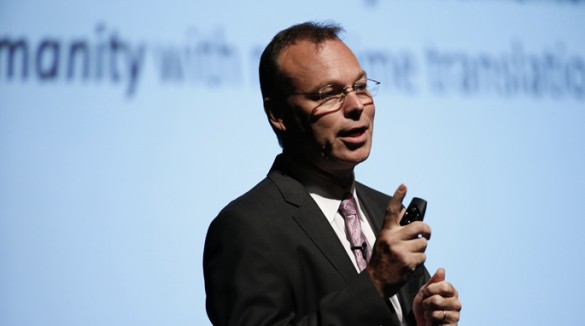At Vanderbilt University Medical Center, a recent urgent drug recall of a specific epinephrine auto-injection device elicited a quick communications strategy to protect affected patients seen by Vanderbilt Medical Group providers.
The effort involved collaboration among patient safety and information systems personnel, clinical leaders and legal and risk management staff.
“This episode highlighted important secondary benefits of today’s health information technology as used here at Vanderbilt. It pointed to new opportunities to use these systems to focus VUMC’s response to sudden events that may broadly affect our patients, not only future drug recalls, but floods, ice storms and other catastrophic events that may pose widespread therapeutic disruptions, or infectious disease outbreaks — anything that might warrant a quick supportive communications response from the Medical Center,” said Gerald Hickson, M.D., senior vice-president for Quality, Safety and Risk Prevention and assistant vice chancellor for Health Affairs.
Early on Oct. 29, two days before Halloween, the pharmaceutical company Sanofi US announced the immediate recall of its epinephrine auto-injection device, Auvi-Q, which is prescribed for children and adults at risk of severe allergic reactions, including potentially life-threatening reactions to insect bites and stings, foods and medications. The company issued the recall in the wake of 26 cases of suspected malfunction. No deaths had been reported.
“Kim Unertl, one of our faculty members in Biomedical Informatics, is a caregiver to a child who was prescribed an Auvi-Q. Dr. Unertl had the idea: why don’t we come up with a Vanderbilt-wide, systematic approach to communicating this to patients, including leveraging our informatics infrastructure and personnel. The timing was critical, given that Halloween was two days away,” said Trent Rosenbloom, M.D., MPH, associate professor of Biomedical Informatics, Medicine and Pediatrics and director of the patient Web portal My Health at Vanderbilt.
With Vanderbilt’s younger patients about to devour bags of Halloween candy, a Medical Center team quickly developed a way to reach patients affected by the recall.
The team included Hickson, Chief Medical Officer Paul Sternberg Jr., M.D., and Roger Dmochowski, M.D., MMHC, medical director of risk management at Vanderbilt University Hospital. Also involved were HealthIT; Quality, Safety and Risk Prevention; Access and Patient Experience; the Office of the General Counsel; and Risk and Insurance Management.
By the afternoon of Oct. 29 the team had a list of 359 VMG patients known to have a recent prescription for the device. It was compiled from electronic prescription logs, electronic medical record medication lists and electronic records of prescriptions filled at Vanderbilt’s retail pharmacy.
A message was composed and approved, alerting patients and families, and asking them to contact their provider immediately to obtain a prescription for an alternate epinephrine auto-injector.
On Friday afternoon, Oct. 30, 189 Vanderbilt Auvi-Q users who have accounts on My Health at Vanderbilt were prompted by email to log in to their accounts to view the Vanderbilt alert.
The next day the alert was sent by U.S. mail to all 359 affected patients and families. An alert was also posted on StarPanel, Vanderbilt’s electronic medical record application, and VMG providers received email notices of the recall.
On Monday, Nov. 2, patients and families on the list began receiving a shorter version of the Vanderbilt message via automated phone call; this was the first time that Vanderbilt’s robocall patient reminder system has been used to broadcast this type of information.
“I was impressed by how quickly our people were able to come together to address this issue,” Hickson said. “We were able to pull the list of affected patients together very quickly and efficiently. The episode also told us there are things we should be able to do more efficiently, so we’re undertaking a process review to see how this could be made even smoother next time.”
For more information on the recall, visit the Sanofi website.















